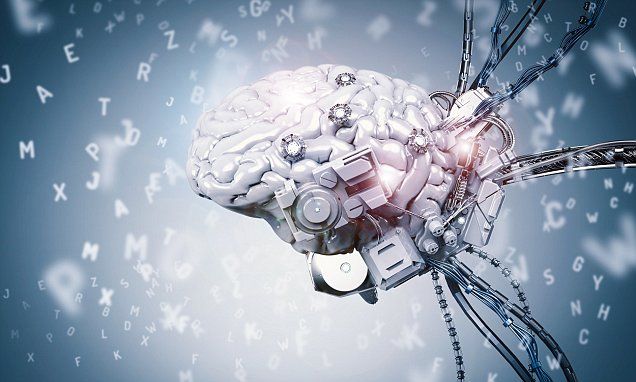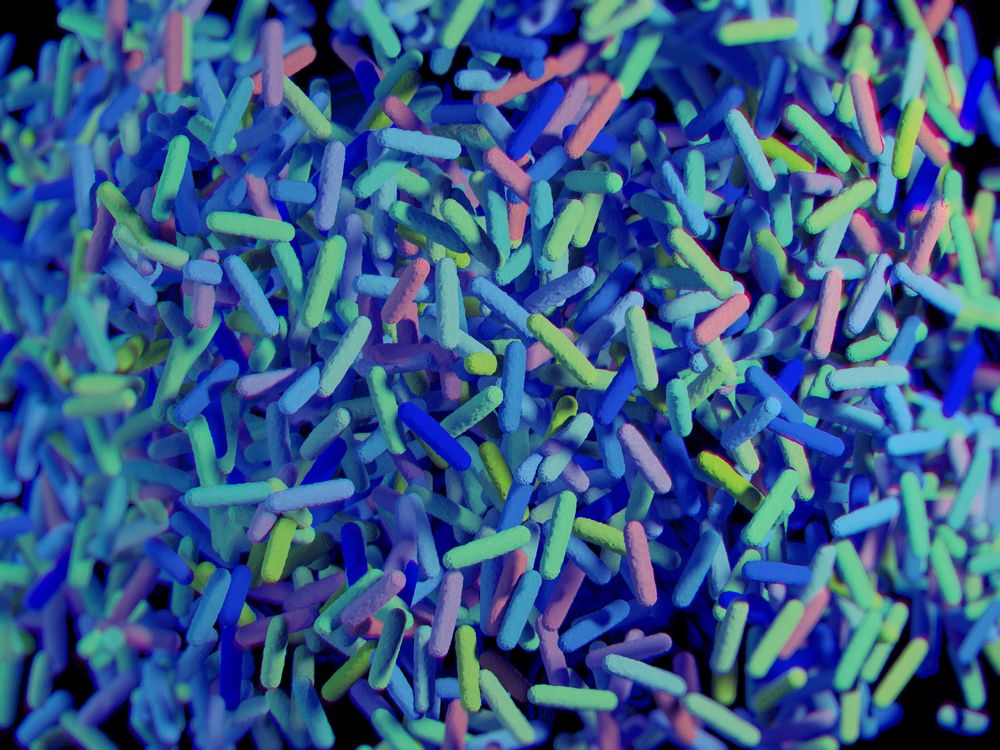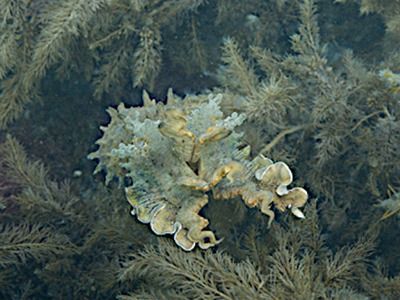Page 10111
Oct 16, 2017
Chemical treatment improves quantum dot lasers
Posted by Saúl Morales Rodriguéz in categories: biotech/medical, nanotechnology, quantum physics
One of the secrets to making tiny laser devices such as opthalmic surgery scalpels work even more efficiently is the use of tiny semiconductor particles, called quantum dots. In new research at Los Alamos National Laboratory’s Nanotech Team, the ~nanometer-sized dots are being doctored, or “doped,” with additional electrons, a treatment that nudges the dots ever closer to producing the desired laser light with less stimulation and energy loss.
“When we properly tailor the compositional profile within the particles during their fabrication, and then inject two or more electrons in each dot, they become more able to emit laser light. Importantly, they require considerably less power to initiate the lasing action,” said Victor Klimov, leader of the Nanotech team.
In order to force a material to emit laser light one has to work toward a “population inversion,” that is, making the number of electrons in a higher-energy electronic state exceed the number that are in a lower-energy state. To achieve this condition normally, one applies an external stimulus (optical or electrical) of a certain power, which should exceed a critical value termed the “optical-gain threshold.” In a recent paradigm-changing advance, Los Alamos researchers demonstrated that by adding extra electrons into their specially designed quantum dots, they can reduce this threshold to virtually zero.
Continue reading “Chemical treatment improves quantum dot lasers” »
Oct 16, 2017
Yes, people do not like to admit it which is a serious barrier to acknowledging we should be doing something about it
Posted by Steve Hill in category: life extension
How did you come to accept that aging was a problem?
#CrowdfundTheCure for #aging at www.lifespan.io
Oct 16, 2017
A Healthy Aged Gut Is Similar to a Healthy Young Gut
Posted by Steve Hill in categories: biotech/medical, life extension
The topic of the gut microbiota is increasingly in the news of late, and its connection with chronic age-related inflammation, known as inflammaging, is becoming increasingly clear.
What is the microbiota?
The microbiota describes the community of symbiotic and pathogenic microorganisms that live in and on all multicellular organisms, and it includes bacteria, archaea, protists, fungi, and viruses. In particular, the gut microbiota and its role in aging and disease have increasingly become of interest to researchers in recent years.
Continue reading “A Healthy Aged Gut Is Similar to a Healthy Young Gut” »
Oct 16, 2017
When Should We Edit Human Genes? What You Need to Know
Posted by Montie Adkins in categories: bioengineering, biotech/medical

There’s a difference between editing genes in a person’s somatic cells and germline cells.
Editing somatic cells, which are differentiated (e.g., skin cells) and non-reproductive, impacts them alone. In contrast, editing germline DNA means changes are passed along to the next generation during reproduction. It’s no minor distinction.
Continue reading “When Should We Edit Human Genes? What You Need to Know” »
Oct 16, 2017
In A Historic Discovery, A Neutron Star Merger Has Been Observed For The Very First Time
Posted by Andreas Matt in categories: physics, space
The fifth observation of gravitational waves (GW) marks the beginning of a new era in astronomy. On August 17, 2017, the LIGO and VIRGO collaborations detected neutron stars merging for the first time and immediately alerted observatories around the world. In a matter of minutes the event had been located, another first for GW astronomy, and telescopes around the world begun studying it almost immediately.
The event observed, called GW170817, was produced in galaxy NGC 4993, located 130 million light-years from Earth. The gravitational signal was the strongest ever observed, lasting over 100 seconds, and it emitted a gamma-ray burst (GRBs), providing the first piece of evidence that GRBs are produced by neutron star collisions. It also provided the strongest evidence yet that neutron star mergers are responsible for the creation of the heaviest elements in the universe, like gold and platinum.
The importance of this observation cannot be understated. We are witnessing Galileo pointing the telescope up, or Henrietta Swann Leavitt working out the relation that will be used to measure cosmic distances. This observation brings a completely new dimension to astronomy. The seven papers published in Nature, Nature Astronomy, and Astrophysical Journal Letter are also record-breakers. They have over 45,000 authors – around 35 percent of all active astronomers in the world – who worked at the over 70 observatories that helped to make this discovery.
Oct 16, 2017
‘Postbiological’ alien civilisation that survives using AI could exist
Posted by Carse Peel in categories: alien life, life extension, robotics/AI

Are AI aliens watching Earth? An immortal machine civilization could already exist and may be BILLIONS of years old, leading expert claims…
Artificial intelligence could already exist elsewhere in the universe and may have been around for billions of years, according to a leading expert.
Continue reading “‘Postbiological’ alien civilisation that survives using AI could exist” »
Oct 16, 2017
AI nano-machines could be injected into our brains within 20 years
Posted by Carse Peel in categories: business, government, health, nanotechnology, robotics/AI

AI machines injected into our bodies could give us superhuman strength and let us control gadgets using the power of THOUGHT within 20 years…
Humans could be ‘melded’ to machines, giving us huge advancements in brain power, experts told peers at the House of Lords Artificial Intelligence Committee (pictured, stock)
Continue reading “AI nano-machines could be injected into our brains within 20 years” »
Oct 16, 2017
Inspired by Octopus Skin, Engineers Develop a Programmable “Camouflaging” Material
Posted by Carse Peel in categories: biological, materials
WOODS HOLE, Mass.—For the octopus and cuttlefish, instantaneously changing their skin color and pattern to disappear into the environment is just part of their camouflage prowess. These animals can also swiftly and reversibly morph their skin into a textured, 3D surface, giving the animal a ragged outline that mimics seaweed, coral, or other objects it detects and uses for camouflage.
This week, engineers at Cornell University report on their invention of stretchable surfaces with programmable 3D texture morphing, a synthetic “camouflaging skin” inspired by studying and modeling the real thing in octopus and cuttlefish. The engineers, along with collaborator and cephalopod biologist Roger Hanlon of the Marine Biological Laboratory (MBL), Woods Hole, report on their controllable soft actuator in the October 13 issue of Science.
Led by James Pikul and Rob Shepherd, the team’s pneumatically activated material takes a cue from the 3D bumps, or papillae, that cephalopods can express in one-fifth of a second for camouflage, and then retract to swim away with minimal hydrodynamic drag. (See video below of live Octopus rebescens expressing its skin papillae.)
Oct 16, 2017
Game on! Police play Gran Turismo Sport to improve driving skills
Posted by Carse Peel in categories: education, virtual reality

The four drivers received specialist training, including a new virtual reality mode…
Lincolnshire police officers have been receiving extra lessons in high-speed car chases — by playing a video game.
Continue reading “Game on! Police play Gran Turismo Sport to improve driving skills” »














